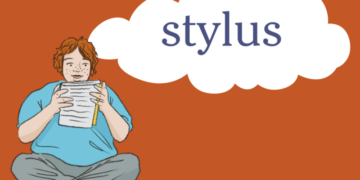When it comes to the Latinx community, terminology and identity are an important discussion with many varied opinions. Some prefer Hispanic, others Latino/a, and some Latine and Latinx. Still, many will not use any of these terms and just say their nationality instead. The conversation about the differences among these labels are there, but what’s talked about less is why they’re there. The short answer can be summed up in a not-so-simple word — diaspora.
So, What is the Latinx and Hispanic Diaspora?
Diaspora is generally defined as “a group of people who spread from one original country to other countries” by the Cambridge Dictionary. The Latinx and Hispanic Diaspora is about the current and historical movement of Hispanic and Latinx people out of their home countries. This occurs between Latin American countries, and to other continents and foreign countries. However, the largest number of Latin American migrants are spread across North America.
The United States alone has over 60 million people who identify as Hispanic, Latino, and/or Latinx according to the 2021 U.S. Census. That’s nearly one fifth of the U.S. population. According to the UN’s 2022 World Migration Report, over 10 million are Mexican-born emigrants to the United States. The next highest foreign-born Latin-American populations in the U.S. are Cuban and El Salvadoran, each with about 1.4 million emigrants.
Why Teach the Latinx Diaspora?
These numbers and figures go to show just how important it is to build an inclusive classroom where Latinx histories, experiences, and cultures are taught, engaged with, and respected. This data also shows us why these broad terms – Hispanic, Latino/a, Latinx/e — don’t seem to catch the complexity of the Latinx identity. People move in different ways, from different Latinx countries that have different ethnic and racial backgrounds.
That’s where teaching about the Latinx and Hispanic Diaspora is valuable. It can bring nuance and context into the classroom that allows for a deeper understanding and discussion of identity beyond terminology. Because even if none of your students identify as Latinx/e, Latino/a, or Hispanic, they live in a diverse, global society and will know or meet someone who does. And that’s important during Latinx Heritage Month and every other month of the year. Especially to middle and high school students who are growing into their own individual identities everyday.
6 Ways to Teach Students about the Latinx Diaspora
There are endless topics and countless ways to teach middle and high school students about Latinx culture. Here are a few ideas and resources to get you started.
Use geography to educate students about Latinx borders and migration.
Migration, borders, and geography play a tremendous role in any diaspora, but especially the Latinx one. In fact, there are 22 countries that fall under the Latinx and Hispanic umbrella. Understanding the historical and contemporary geographical context and borders can help students understand the who, what, where, when, and why behind Latinx emigration.
Resource Highlights

Immigration Scheme in the Caribbean Region by History Teachertt
Not Grade Specific

Intro to Latin America: Geography and the Basics Notes Bundle by The Latin American Studies Teachers Vault
Grades: 8-12
Pro Tip: To find more resources, try searching for a combination of “latinx” or “hispanic” and your sub-topic, like migration, immigration, or geography.
Add a history lens or component to your Latinx diaspora lessons.
Diasporas are often influenced by societal events, leading to different “waves” of migration like the historical migration of Cubans to Miami from the ‘70s to ‘90s, and the more recent climate refugee crisis. Connecting these migrations and moments of diaspora to broader social justice movements can help bridge the gap between historical and current events. Additionally, it can make your lessons more engaging and relevant to students.
Resource Highlight

LatinX History and Present Curriculum Module: Social Justice Movements by Ebonee Weathers
Grades: 6-12
Pro Tip: Choose a moment or movement to focus on with the whole class. Or give students the opportunity to research and choose an issue to focus on for individual learning.
Engage students with empathy and creativity by incorporating music into your Latinx lessons.
Music can go beyond the music room and into your classroom. Use songs and music videos in your history, ELA, and Spanish lessons to teach about the diaspora while engaging your students’ interest and empathy.
Resource Highlights

Mi tierra – Homeland: 8 Narratives & Songs on Migration, Identity, & Belonging by David Lindes
Grades: 11-12

AP Spanish-Emigración. Canción: Cuba, isla bella (Orishas) by Learn Spanish with Miriam
Grades: 10-12
Pro Tip: Discover more music-based activities by using different search filters, like Latinx Studies or Music.
Teach about Latinx and Hispanic migration, stories, and politics through notable leaders and figures.
Using leaders and figures to teach about the Latinx Diaspora can create a thread for your lesson’s narrative. All of the issues around diaspora, but especially those concerning identity, migration, and politics, can be connected through the lens of the individual. This not only helps students understand intersectionality, but also can make the lesson more relatable and digestible.
Resource Highlights

Cesar Chavez (2014) Cloze Video Notes (Video worksheet) by Culturally Relevant Teaching
Grades: 6-12

Borderland/La Frontera by Gloria Anzaldua Study Guide by Omega English
Grades: 11-12
Pro Tip: Cross-reference your search for a specific individual on TPT with a list of notable Hispanic, Latino/a, and Latinx figures like this one.
Deepen students’ understanding by teaching about specific countries, ethnicities, identities, and stories.
Latinx traditions, foods, slang, geography, and overall culture can vary quite a bit from country to country. And individuals’ experiences can also vary quite a bit as a result of intersecting identities.
For example, most nations in the Caribbean and Latin America have a history of African Diaspora and slavery, as well as colonization of Indigenous Peoples. Subsequently, colorism is a systemic problem in many Latin American communities (that also extends into the United States through racism), and it affects how Afro-Latinx people experience diaspora in comparison to white Latinx groups.
As a result, focusing on a particular aspect of the Latinx Diaspora, such as a specific nationality or identity, can help build on students’ foundational breadth of knowledge by providing them with additional depth.
Resource Highlights

Mexican American Studies: Population & Labor – Monument Project by Angela Willis – Epic History Projects
Grades: 9-12

El legado afrodescendiente en Argentina (Afro-Latinos) by Speaking Latino
Grades: 8-12
Pro Tip: Try searching for the specific identity, like Afro-Latino, or country, like Brazil, that you want to teach about.
Be prepared during Latinx Heritage Month with substitute plans that will leave an impact on students.
Don’t miss a beat by adding Latinx and Hispanic Diaspora resources to your toolkit for substitute teachers. Everybody has those days, but it doesn’t mean your students’ cultural learning has to stop.
Resource Highlight

Peril and Promise Latino Americanos PBS Sub Plans for Spanish & Social Studies by DrG Spanish Teacher
Grades: 9-12
Pro-tip: Use this link to find more resources your sub can use during Latinx Heritage Month.
Bring more Latinx and Hispanic cultures, histories, and experiences into your classroom during Latinx Heritage Month and beyond by checking out the Latinx Studies resources on TPT.


















